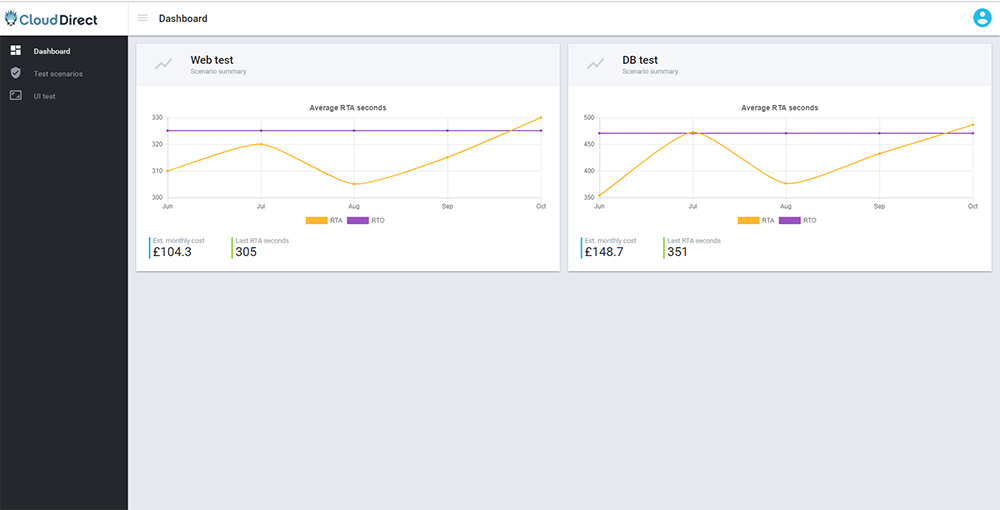Why Disaster Recovery testing is so much easier in the cloud

Disaster Recovery (DR) is important. We all know that. We only need to remember what’s happened to companies like BA and many others when things have gone wrong in the past. Or to look to the research that says UK SMEs suffer to the tune of £16k an hour when an outage happens. Or to the rise of cybercrime as the fastest growing cause of more and more outages occurring.
So why, given all the evidence, is it that so many companies still never test their DR to check that it’s actually going to work when they need it?
At Cloud Direct, we believe this is a question that businesses should not even think about having to answer. And it’s why, as you’ll find if you read on, we’ve just launched a new solution that makes Disaster Recovery testing much easier to do than it has been in the past.
Too many companies are still taking the risk
Currently, many organisations don’t carry out tests because they think it’s going to be too risky and too much hassle. That’s because traditional DR is usually based on having a second set of servers somewhere (e.g. at another office), and proper tests need to involve shutting down the primary servers to see what happens. Many organisations have deemed this operation to be such a risky and potentially costly task that they never carry out the test at all. As a result, they often discover that when a real disaster happens their recovery is too slow, that their recovered data can’t be read, or that infrastructure changes post-recovery render new devices or applications unworkable.
Thankfully, there is a simple solution…
DR as a Service
Disaster Recovery as a Service (DRaaS) is a relatively new business model for DR that is powered by the capacity, flexibility, security and performance of a new generation of public cloud services. One of its key benefits, amongst many others, is that you don’t have to pay continuously for either the upkeep of your own secondary facility or hardware reserved at your cloud provider. You simply pay for the capacity to failover services whenever the need arises. So when you do need to carry out a test, you simply boot up the required servers in an isolated environment and test them without affecting your primary servers at all. There’s no risk to your business continuity, and systems carry on as normal.
But the real beauty of it is that you can get your DRaaS set up to be tested automatically as often as you like…
Time to take back control
Imagine being able to carry out a test every single day, week or month – in exactly the way you want – and the process being so smooth that you can do the tests without the business even knowing it’s happening?
That’s exactly what you can do with the automated new disaster recovery testing tool we’ve created for Azure Site Recovery (which, as it sounds, is DRaaS built on Microsoft Azure).
There’s no need for weeks of planning. The tool is very simple to use, enabling you to configure what you want to test (whether it’s your web environment, your database etc.) in minutes. You can then set the test to happen automatically (say, for example, once a week), and then once each test is completed – as you can see from the screenshot below – it’s really easy to analyse the results over a given period using a visual dashboard.

This, in our view, is a really practical and neat step forward that could help companies to start implementing the rigorous testing regimes that they should have been carrying out for years. Especially if they want to avoid the high costs of an outage that we highlighted at the start of this blog.
The best way to make your own mind up, though, is to see how this all works with your own eyes. Just send your request to enquiries@clouddirect.net and we’ll happily give you a demo. Or if you’d like to find out more about the many other benefits of DRaaS, we recommend this whitepaper to help you build your business case.





